COTTON CANDY
Cotton candy, additionally known as fairy floss and sweet floss, is a spun sugar confection that resembles cotton. It typically consists of small quantities of flavoring or food coloring.
The sweet is made by way of heating and liquefying sugar, and spinning it centrifugally via minute holes—with the aid of which the sugar hastily cools and re-solidifies into first-rate strands. It is often bought at festivals, circuses, carnivals, and gala's, served in a plastic bag or on a stick or paper cone.
Cotton sweet is made and offered globally, as sweet floss inside the UK, Ireland, Egypt, India, New Zealand, Sri Lanka, and South Africa, and as fairy floss in Australia. Similar confections consist of the Korean kkul-tarae and the Persian pashmak.
History
Several places claim the foundation of cotton sweet to a form of spun sugar found in Europe within the 19th century. At that point, spun sugar was an pricey, hard work-in depth enterprise and turned into now not normally available to the average character.Others suggest versions of spun sugar originated in Italy as early as the fifteenth century.
Machine-spun cotton candy turned into invented in 1897 by way of dentist William Morrison and confectioner John C. Wharton, and primary brought to a wide target market at the 1904 World's Fair as "Fairy Floss" with notable achievement, promoting sixty eight,655 bins at 25¢ (equal to $7.2 in 2020) consistent with field.[citation needed] On September 6, 1905, Albert D. Robinson of Lynn, Massachusetts submitted his patent for an Electric Candy-Spinning Machine. The patent become for a combination of an digital starter, motor-pushed rotatable bowl, that maintained heating successfully. By May 1907 he transferred the rights to the General Electric Company of New York. His patent still remains today as the fundamental cotton candy gadget.
Joseph Lascaux, a dentist from New Orleans, Louisiana, invented a similar cotton sweet device in 1921. The Lascaux patent named the candy confection "cotton sweet", subsequently overtaking the name "fairy floss", although it keeps this name in Australia. In the Nineteen Seventies, an automated cotton sweet gadget became created which made the product and packaged it. This made it easier to produce and sell at carnivals, stalls and different events requiring a greater portable method of cotton sweet manufacturing.
Tootsie Roll Industries, the sector's largest cotton sweet manufacturer, makes a bagged, fruit-flavored model referred to as Fluffy Stuff.
In the United States, National Cotton Candy Day is widely known on December 7 .
Production
Typical machines used to make cotton sweet consist of a spinning head enclosing a small "sugar reserve" bowl into which a price of granulated, coloured sugar (or separate sugar and food coloring) is poured. Heaters near the rim of the pinnacle melt the sugar, which is squeezed out through tiny holes through centrifugal pressure. Colored sugar packaged especially for the system is milled with melting characteristics and a crystal length optimized for the pinnacle and heated holes; granulated sugar used in baking contains exceptional crystals which spin out unmelted, at the same time as rock sugar crystals are too large to properly touch the heater, slowing the production of cotton sweet.
The molten sugar solidifies in the air and is caught in a larger bowl which absolutely surrounds the spinning head. Left to operate for a duration, the cotton-like product builds up on the interior partitions of the bigger bowl, at which point machine operators twirl a stick or cone around the rim of the huge catching bowl, collecting the sugar strands into portions which are served on stick or cone, or in plastic bags. As the sugar reserve bowl empties, the operator recharges it with more feedstock. The product is touchy to humidity, and in humid summer season locales, the manner can be messy and sticky.
Modern improvements in cotton-sweet equipment include vending machines which routinely produce unmarried servings of the product, developed in Taiwan and lighted or sparkling sticks.
Flavoring
The source material for sweet mesh is generally each coloured and flavored. When spun, cotton sweet is white due to the fact it's miles crafted from sugar, however including dye or coloring transforms the coloration. Originally, cotton sweet turned into just white. In the United States, cotton sweet is available in a huge variety of flavors, however taste-blend colorations predominate—blue raspberry and crimson vanilla, both in the beginning formulated by the Gold Medal brand (which uses the names "Boo Blue" and "Silly Nilly"). Cotton sweet may additionally come out crimson whilst blended. Cotton candy machines had been notoriously unreliable until Gold Medal's invention of a sprung base in 1949—considering the fact that then, they have manufactured almost all business cotton candy machines and lots of the cotton sweet inside the US.
Typically, once spun, cotton candy is simplest marketed by colour. Absent a clear call apart from "blue", the exceptional taste of the blue raspberry flavor mix has long gone on to come to be a compound flavor that some other meals (gum, ice cream, rock sweet, fluoride toothpaste) now and again borrow ("cotton-candy flavored ice cream") to invoke the nostalgia of cotton sweet. The sale of blue cotton sweet at fairgrounds inside the Nineteen Fifties is one of the first documented times of blue-raspberry flavoring in America.[19] Pink bubble gum went thru a similar transition from unique branded product to a generic taste that transcended the original confection, and "bubble gum flavor" often indicates up inside the same product categories as "cotton sweet taste".
Machines
In 1978, the primary automated gadget became used for the production of cotton candy. Since then, the creations and improvements of this gadget have come to be greater and extra. They range in sizes from counter-pinnacle reachable to birthday party and carnival length. Modern machines which are made for industrial use can maintain up to 3 pounds (1.4 kg) of sugar and feature compartments for garage of greater flavors. The rotating bowl on the top spins at three,450 revolutions in step with minute.
2. Candy Making
Candy making or candymaking is the guidance and cookery of goodies and sugar confections. Candy making consists of the education of many various candies, which includes difficult sweets, jelly beans, gumdrops, taffy, liquorice, cotton candy, sweets and chocolate muffins, dragées, fudge, caramel candy, and toffee.
Candy is made by way of dissolving sugar in water or milk to shape a syrup, that's boiled until it reaches the preferred attention or starts to caramelize. The kind of candy relies upon on the substances and the way lengthy the combination is boiled. Candy is available in a wide kind of textures, from gentle and chewy to tough and brittle. A chocolatier is someone who prepares confectionery from chocolate, and is distinct from a chocolate maker, who creates chocolate from cacao beans and other elements. Cotton sweet is a form of spun sugar often prepared using a cotton candy device.
History
The technology for sweet making has commonly stored tempo with the era of the instances. For instance, whilst steam energy became common in fabric and engineering factories, steam strength become extensively utilized in candy factories.
Candy making and consumption multiplied significantly at some point of the Industrial Revolution in the 19th century. Candy had formerly been made via hand, both on occasion at domestic or by professionals in small, neighborhood organizations. Increased mechanization precipitated expenses to drop and manufacturing to increase.
In the past due nineteenth century and specifically the early twentieth century, business sweet making became almost completely a masculine affair, and domestic-based totally candy making changed into a feminine affair. Candy turned into considered candy and dainty, so making it at domestic, giving it away to buddies, and possibly selling small quantities inside the neighborhood area, conformed with the Western gender roles for ladies of the time. Most girls making and promoting candy did so handiest seasonally or for a touch extra money; they rarely earned sufficient to help themselves or their households. Despite numerous massive manufacturers being named after women or otherwise capitalizing on wholesome, feminine, and maternal photos, very few have been owned or operated through women.
Gender segregation additionally affected candy employees inside the 19th century and the first half of of the 20 th century. Men and boys have been hired for cooking or running machinery. Women were mainly hired for wrapping and placing goodies in packages or for hand-dipping chocolates in chocolate. The excellent-paid girls were chocolate dippers, yet the wages of these skilled and experienced female people were nearly constantly decrease than that of the worst-paid male gadget operators.
Hard Candy
Hard candy, also called boiled sweet, is a candy prepared from one or greater syrups boiled to a temperature of 160 °C (320 °F). After a syrup boiled to this temperature cools, it's far called tough candy, because it will become stiff and brittle because it processes room temperature. Hard candy recipes variously name for syrups of sucrose, glucose, or fructose. To upload coloration, food coloring is every now and then used.
Sugar Stages
The final texture of sweet relies upon at the sugar concentration. As the syrup is heated, it boils and the sugar concentration will increase as water evaporates. A given temperature corresponds to a particular sugar attention because the boiling-factor elevation of the sugar solution is a colligative assets (i.E., it's far associated with the attention of the answer), so temperature is used as a marker for the vital attention. In wellknown, higher temperatures and extra sugar concentrations result in difficult, brittle candies, and lower temperatures bring about softer chocolates.
The names come from the strategies used to check the syrup before thermometers have become low-cost. The "thread" level is tested by way of cooling a bit syrup, and pulling it between the thumb and forefinger. When the correct degree is reached, a thread will form. This stage is used for making syrups. For subsequent tiers, a small spoonful of syrup is dropped into cold water, and the characteristics of the resulting lump are evaluated to decide the concentration of the syrup. A easy lump suggests "ball" stages, with the corresponding hardness described. At the "gentle crack" stage, the syrup forms threads which might be just pliable. At the "difficult crack" level, the threads are brittle.
This technique is still used these days in a few kitchens. A candy thermometer is more convenient, but has the downside of not mechanically adjusting for neighborhood conditions along with altitude, as the cold water check does.
Once the syrup reaches 171 °C (340 °F) or better, the sucrose molecules wreck down into many easier sugars, creating an amber-colored substance called caramel. This ought to no longer be confused with caramel candy, even though it is the candy's main flavoring.
Soft Candy
Cotton candy, also called candy floss, is a form of spun sugar. Typical machines used to make cotton sweet consist of a spinning head enclosing a small bowl into which granulated sugar is poured.Colored sugar or separate sugar and meals coloring are used to provide shade. Heaters near the rim of the top melt the sugar, that is squeezed out through tiny holes by means of centrifugal pressure, and the molten sugar solidifies inside the air and is stuck in a larger bowl which absolutely surrounds the spinning head.After the product builds up on the inner walls of the bigger bowl, a stick, cone, or palms are inserted, upon which the sugar strands are collected.Marshmallows
Marshmallows are organized whipping air into gelatin, corn syrup and sugar. The use of marshmallow to make a candy dates again to historic Egypt, wherein the recipe known as for an extract from the root of the marshmallow plant (Althaea officinalis) and combining it with nuts and honey. Another pre-current recipe uses the pith of the marshmallow plant, in preference to the basis. In contemporary times, marshmallows are regularly commercially prepared the use of extrusion.
Chocolatering
Chocolatiering, the making ready of confections from chocolate, entails the strategies of tempering, molding and sculpting. Tempering is a heat treatment method performed on chocolate concerning heating and cooling the chocolate to bring about favored characteristics like shininess of the chocolate or 'snap', the way it breaks. Molding is a design method used in making chocolate pieces that are of a positive shape through taking liquid chocolate and pouring it into a mould and letting it harden. Sculpting is a form of three-dimensional artwork that could involve the use of molds and portions of chocolate, and redecorating the piece with designs in chocolate.Occupational Hazards
Making candy can be unsafe because of using boiled sugar and melted chocolate. Boiling sugar frequently exceeds a hundred and fifty °C (302 °F)—hotter than most cooked ingredients—and the sugar has a tendency to stick to the pores and skin, inflicting burns and blisters upon skin contact. Worker protection packages attention on reducing touch among people and hot meals or warm equipment, and lowering splashing, due to the fact even small splashes can cause burns.
Some elements can also aggravate the eyes and lungs, if, for instance, powdered elements are accidentally inhaled, so worker safety includes decreasing exposure to doubtlessly tense substances.Occupational dust publicity reduction measures can lessen health issues amongst employees.
Dust manipulate measures can lessen hazard of catastrophic dust explosions from sugar and other components in candy.Dust explosions have induced the destruction of factories and killed candy makers. Some dirt explosions consist of the 1948 explosion of a Brach's candy manufacturing facility in Chicago, wherein 17 employees died, and as lately as the 3 sugar silo fires at Perfetti Van Melle's candy manufacturing unit in Kentucky, in 2003, 2015, and 2017.
Tools And Machinerys
A kind of tools and machines are used in making sweet, starting from simple kitchen tools like bowls and spoons to complicated manufacturing unit machinery.
Because specific temperature manage is essential for a few candies, a not unusual device is the sweet thermometer. Inexpensive sweet thermometers degree meals temperatures as much as approximately one hundred sixty °C, and those designed for business sweet manufacturing may additionally run even better.
A starch mogul is used in sweet factories to form soft goodies or candy centers from syrups or gels. These facilities can also then be despatched via a chocolate enrober to coat them in chocolate.
Pay
Although they're regularly skilled workers, sweet makers aren't typically rather paid. A chocolatier in the US, for instance, typically earns approximately US $21,000 consistent with yr.
3. Dragon Bread Candy
Dragon's beard sweet (simplified Chinese; conventional Chinese: or Chinese cotton sweet is a hand-crafted traditional art of China. It is a traditional Chinese confectionary much like floss halva or Western cotton sweet, which can be determined in lots of Chinese groups. Dragon's beard sweet was to start with created in China, however quickly spread in reputation and have become a regional delicacy in different parts of East Asia inclusive of Korea, as well as (and extra currently) Canada, Turkey, Singapore, and america.
It has a low sugar content (19%) and occasional saturated fat content (2%). By assessment, cotton candy is fats unfastened with a very excessive sugar content material (94%).[Dragon's beard candy has a completely quick shelf lifestyles. It is extraordinarily sensitive to moisture and tends to soften whilst exposed to better temperatures, notably all through heat climate.
History
According to legend, Dragon's Beard Candy was invented for the duration of the Chinese Han Dynasty by means of an imperial courtroom chef who entertained the Emperor at some point by way of appearing the complicated steps in making a brand new confection, which involved stretching a dough-like aggregate composed from rice flour into small, skinny strands. These strands reminded the Emperor of a dragon's beard, and were sticky enough to adhere to at least one's face effortlessly, so the concoction become named Dragon's Beard Candy. The name may also be attributed to the fame of the mythical dragon as a symbol of the Chinese Emperor,so presenting the confection as Dragon's Beard Candy was deemed proper due to the social nature of the candy. It become reserved most effective for the ruling magnificence due to the complexity of the instruction manner.
Dragon's Beard Candy have become a source of conflict several centuries later, however, as all through the Chinese Cultural Revolution the Red Guard, acting on the orders of the Communist Party of China, forbade the Chinese population to take part in sports that would be attributed to the Han Dynasty.The initial rarity of the sweet, blended with government coverage banning the art, made the craft of making Dragon's Beard Candy even greater isolated and moderately practiced. Nevertheless, in recent years, the artwork has resurfaced in vacationer locations together with road fairs, and has even spread to farther reaches of the globe via devoted masters of the project.
Prepration
Traditionally, Dragon's Beard Candy is made from sugar and maltose syrup, although recipes based totally on corn syrup are actually used in the United States. The most important substances of Dragon's Beard Candy consist of about seventy five grams of great white sugar, seventy five grams of peanuts, seventy five grams of desiccated coconut, 38 grams of white sesame seeds, 150 grams of maltose syrup, and 1 bowl of glutinous rice flour. Due to the presence of huge amounts of syrup, the sweet has a totally excessive sugar content material.
For training of Dragon's Beard Candy, the preparer ought to to begin with boil and soften the saturated maltose answer (which may additionally include sugar or corn syrup) for five mins till thickened, observed by leaving the mixture to relax for 10 mins until a semisolid state is reached. This ensuing mass, which is incredibly bendy or elastic, is then formed into a torus. Next, the preparer need to take the gooey sugar, corn syrup, or sugar cane based totally gel and dip it into the sugar dough. Thirdly, the gooey chew have to be formed into a ring corresponding to a doughnut, the important thing feature being the big hole. This step must via accompanied by means of time and again pulling, twisting, stretching, and folding the dough over on itself, doubling the quantity of strands created after every repetition. While the sweet is being folded, it's far advocated to maintain the dough blanketed in toasted glutinous flour to prevent it from sticking to surfaces. The dough need to then be stretched into paper-thin strands, wherein every strand should be 3 to four inches lengthy. Then, the strands ought to be tangled right into a circular shape, and dipped into corn flour to preserve the strands from sticking together. Finally, the hoop have to be reduce into small portions and wrapped around overwhelmed peanuts, sesame seeds, crunched chocolate, or coconut internal. Specific Dragon's Beard Candy filling relies upon on several factors, along with region, reason, and respective chef.
The candy is usually recommended to be consumed right now after its coaching is whole, however it must continue to be fresh for up to six mins in right conditions.
Comparison To Western Cotton
Both cotton candy and Dragon's Beard Candy are product of sugar and share the function of splendid stickiness and a excessive sensitivity to moisture. Both substances will clump collectively whilst uncovered to the air for a sure amount of time. However, cotton sweet has a larger floor place, as a consequence allowing a small amount of sugar to generate right into a extra volume of product. Its serving on every stick is 37 grams, including meals dyes[8] and taste, containing round a hundred and ten energy in keeping with serving.[9] While Dragon's Beard Candy incorporate a lower content of sugar (7.2 grams),[10] it incorporates a slightly higher caloric content material of 141.2, as well as a better fat content (6.1 grams), in comparison to Western-style cotton sweet, typically containing 0g of fat. This is because of the fact that in addition to sugar, Dragon's Beard is composed of peanuts, sesame seeds and other elements, while cotton candy is close to a hundred% sugars.
Presentation
It is not unusual for road vendors of Dragon's Beard Candy to carry out the folding manner worried in training of the confection at their stall, which could appeal to clients interested in the process as a good deal as by using a desire to buy the candy. However, clients can purchase Dragon's Beard Candies thru on line shops.
WRITTEN BY : ADRISH WAHEED
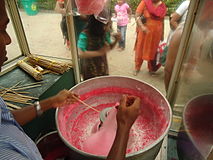
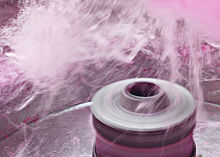
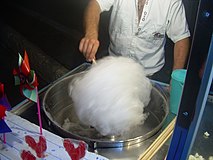
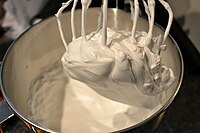
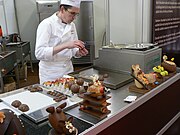

5 Comments:
INFORMATIVE...........
Good work bro....
impressive
keep it up
very informative
Post a Comment
Subscribe to Post Comments [Atom]
<< Home